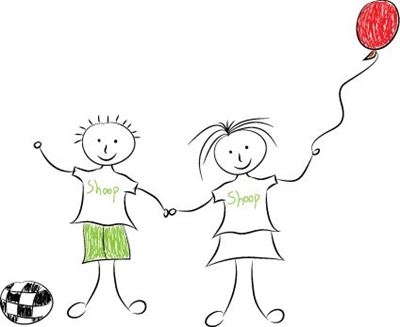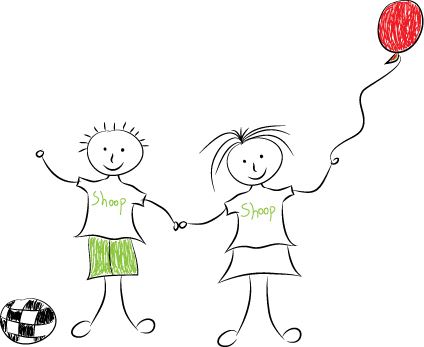Do you spend enough quality time with your children?
Is quality time what you think it is?
Let’s try and understand what quality time really is and find ways of developing the cognitive abilities of our children.
According to Oxford Dictionaries, the definition of the term “Quality time” is
“Time in which one's child, partner, or other loved person receives one's undivided attention, in such a way as to strengthen the relationship.” [1]
So how can parents offer this “undivided attention" to children in order to strengthen their relationship? Would playing games in a tablet help? Is watching DVD’s quality time?
According to modern psychology, there are four major parenting styles: permissive, authoritarian, neglectful and authoritative. Each one of these has its own advantages and disadvantages and there is no best for all solution. Depending on the Parents-Children relationship each family has its own parenting style strongly dependent from the characteristics of its members.
However regardless of the parenting style, what Physicians, Psychologists and other experts of the area stress, is that children need to spend time with their parents. They argue that parents need to spend as much time as possible with their children but they also stress that they should try to share MEANINGFUL TIME doing activities together that develop children's cognitive skills and personality in general.
So the keywords are: SHARE MEANIGFUL TIME.
Unfortunately the easy solution: tablets and movies are not the solution we are seeking for here. Instead, we are looking for activities that require interaction and communication: Helping our children make a nice drawing, having a conversation or reading a story are such activities.
So in order to have quality time with our children the most important thing is to spend meaningful time with them: Do things together. That’s the most important.
Fortunately, this can be done be means of various activities. Let’s see some of them:
Creative arts
Drawing, painting or making music comes naturally to all children and apart from having fun, these Creative Arts can help in many areas of development like Cognitive Development, Imagination and Experimentation, and Emotional Development.
Drawing and Painting
We can ask our children to draw an orange and bring it to us! Ok this is a drawing activity, but is this the best we can do?
Lets try this: Bring an orange and let your kid touch it and play with it for a while, feel its scent, discuss its shape, its colour, even its benefits for our health. Now ask the child to draw it and be there to give a little help if necessary. Sharing this activity with children you help them develop their observational skills, they learn fruits, colours, shapes and they also learn new words from the small conversation you are having.
How about adding a smiling face to this orange? How would it look like? With such interventions we can help children develop their Experimentation and Imagination skills which are both indispensable qualities of scientists in the area of Medical Research for example.
Painting can also help children develop such skills: Kids can mix colours and create their own: they are experimenting until their imagination is satisfied!
We shouldn’t forget that, the importance of imagination was highly valued by Albert Einstein:
“Imagination is more important than knowledge. For knowledge is limited, whereas imagination embraces the entire world, stimulating progress, giving birth to evolution. It is, strictly speaking, a real factor in scientific research.”
Another interesting fact is the relation between early drawing skills with future intelligence: During a study, more than 15000 four-years-old children were asked to make a drawing and when they became fourteen their intelligence was tested. The result was that, those who drew with the most skill were likely to do better in intelligence tests a decade later. So the ability to draw is very important for children’s personality development and we should consider ways of improving such skills.
What about reading stories? Does reading stories to our children help in developing cognitive abilities?
Reading stories is beneficial for children and in fact it is beneficial even for babies. When we read stories to babies actually what we do is help the formation of connections in their brains and these connections are responsible for building various skills such as: language, literacy and social-emotional.
Particularly experts say that reading stories to children helps them developing larger vocabularies, and comprehension skills while it is related to language growth and reading achievement.
Studies conducted to four-five years children have also revealed that the frequency of reading to children is an important factor related to their future performance in school regardless of family background and home environment.
Of course there are many more and of various types activities to have quality time with our children like for example, preparing together a simple sandwich, or setting the table, going for a picnic, take them for a ride, and many- many more. And each one of them offers a valuable experience to them and to you!
In any case and regardless of the type of activity we choose, the important thing is To spend meaningful time with our children while giving them our undivided attention.
Having all these in mind here in Shoop-Shoop, we focus on Quality Time that helps the development of cognitive abilities by means of Creative Arts, Educative Stories and Meaningful Conversations. All these activities are based and designed around imaginary heroes printed on little clothes for the young ones.
In this sense we provide the tools to parents in order to help them spending more quality time with their children. So every time that you buy one of our little clothes you also receive* supportive material that can promote the cognitive abilities of your children.
In line with the preceded analysis and as partly mentioned we offer the chance to share activities like: Drawing, Painting, Reading Stories and Having a Conversation. To achieve that we have created:
- Original designs that stretch children’s imagination
- Dotted drawings that have to be completed and coloured
- Conversation tips and sources around the subject of the design
- And finally a fairy tale with a morale, specially written for every one of our little heroes.
The “Trojan Horse” that brings all these “quality time tools” to you and your children is our high quality organic t-shirt, One of our original designs is printed on it and it comes with love in a Luxury Gift Box to offer to your children a gift receiving experience that begins when opening the box and discovering it’s content.
The activities that you and your children can share after receiving your little clothes is a Shared Experience in 6 acts. We call it “the Shoop-Shoop Experience” and you can discover it h-e-r-e.
Our Creations
Each design has its own character but at the same time belongs to a collection
For example “ Liam the Mighty Pear” is a member of the “Fruits, Sports & Colours” Collection. As the name indicates, this collection is a set of designs related to Fruits of a specific colour practicing a specific sport. So “ Liam the Mighty Pear” who is obviously a Pear, is Green and he is practicing Weight Lifting!
Liam, like all of his friends is an exciting fruit that does extraordinary things in order to stretch the imagination and engage the children to talk, draw, paint, listen to the fairy tale and have a good (quality) time with you.
Discover all our little heroes their conversation tips and stories ……here………………..
Finally because of the fact that Quality time has to be planed,(don't just assume it will happen), with every little T-Shirt you receive a “Quality time Program” that will help you begin organizing your time and engage your children to the whole process.
Thank you
* When you buy one of our little clothes, you get exclusive access to supportive material, which can be downloaded and printed as many times as you wish !
have to be able to download and print this material which is a couple of pages]
References
[1] Cosmic Religion and Other Opinions and Aphorisms”, Albert Einstein, Originally published in 1931 by Covici-Friede, Inc., New York, url: http://quoteinvestigator.com/2013/01/01 /einstein-imagination/#return-note-5113-1
[2] “Genes Influence Young Children’s Human Figure Drawings and Their Association With Intelligence a Decade Later” Rosalind Arden, Maciej Trzaskowski, Victoria Garfield, Robert Plomin, Social, Genetic and Developmental Psychiatry Centre, Institute of Psychiatry, King’s College London, 2014
[3] “To Read or Not to Read: A Meta Analysis of Print Exposure From Infancy to Early Adulthood”, Mol, S.E. and A.G. Bus, 2011
[4] “Joint book reading makes for success in learning to read: A meta-analysis on intergenerational transmission of literacy.”, Bus, A. G., van IJzendoorn, M. H., and Pellegrini, A. D.,1995
[5] “Reading to Young Children: A Head Start in Life”, Department of Education and Early Childhood Development of State Government of Victoria, Faculty of Business & Economics of the University of Melbourne, http://www.education.vic.gov.au/ Documents/about/research /readtoyoungchild.pdf
[6] Tom Luster et al., “Family Advocates’ Perspectives on the Early Academic Success of Children Born to Low-Income Adolescent Mothers,” Family Relations 53, No. 1 (January 2004): 68-77.
[7] Elizabeth C. Cooksey and Michelle M. Fondell, “Spending Time with His Kids: Effects of Family Structure on Fathers’ and Children’s Lives,” Journal of Marriage and the Family 58 (August 1996): 693-707.
[8] Oxford Dictionaries / https://en.oxforddictionaries.com /definition/quality_time
[9] How To Spend More Quality Time With Your Child / http://www.parents.com/parenting/better-parenting/positive/quality-time/
[10]“Parents should spend more quality time with their children, says Royal College of Paediatrics and Child Health”, The Telegraph, http://www.telegraph.co.uk/news/health /children/10922605/Parents-should-spend-more-quality-time-with-their-children-says-Royal-College-of-Paediatrics-and-Child-Health.html
[11]“What your child's drawings say about their IQ: How the sketches a kid makes at age four point to teenage intelligence”, The Dailymail, http://www.dailymail.co.uk/sciencetech/article-2728381/How-child-s-drawings-four-clue-cleverness-Young-depict-human-form-artworks-likely-brighter-teenage-years.html
[12]Extension.org, “Creative Art Helps Children Develop across Many Domains”, http://articles.extension.org/pages/25680/ creative-art-helps-children-develop-across-many-domains
[13]American Academy of Pediatrics, “Why It Is Never Too Early To Read With Your Baby”, 2015, url: https://www.aap.org/en-us/documents/booksbuildconnections_ whyitisnevertooearlytoreadtoyourbaby.pdf








